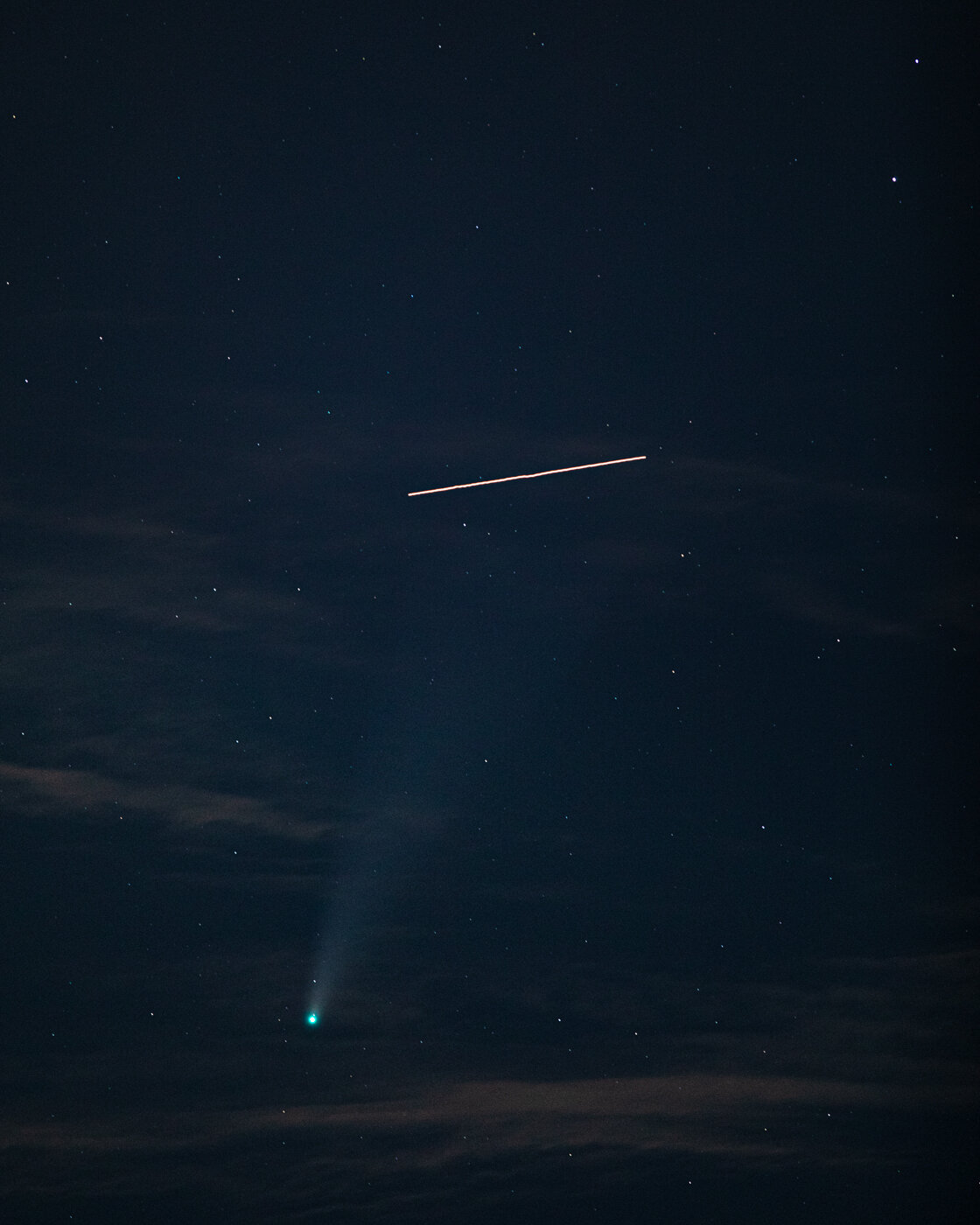Don’t know about you, but I’ve been enjoying photos of comet NEOWISE. After several cloudy, rainy days, the afternoon began to clear. I texted Dan and asked if he was up to seeking out the comet. Where could we go for a quick drive that might have dark skies and an interesting foreground for photos. Dan went out scouting, and he found a nearby forest preserve that looked promising. On the night of 51st anniversary of Apollo 11 landing, we set a time to meet to get our cameras up before dark. We enjoyed the sunset, tried to keep out of the way of bike riders, swatted mosquitoes and enjoyed watching the prairie grasses light up with fireflies.
Danada Forest Preserve, DuPage County
The Stellerium website indicated the comet would be to the northwest and quite a bit higher in the sky than we expected, so there was little need to look for a foreground element for our images. We just hoped the clouds would not increase or blow over the view. The stars and planets began coming out behind us in the east, and Jupiter was the first to shine followed soon by Saturn. It also happened that this night was Saturn’s opposition, meaning it is opposite the sun from Earth and the brightest is will be for over a year. And Jupiter reached opposition just six nights before, so both were big and bright. The long lenses let us see some of Jupiter’s moons and the odd shape of Saturn’s rings. Hubble just took a wee bit better image of Saturn! You’ll get a nice view of both planets in the eastern sky early in the night. (If anyone wants to try shooting the comet or planets, I’ll add some of the shooting specs. If you’re ever interested in details about other images, just shoot me an email.)
Jupiter & Galilean Moons - Canon 5Dmarkiv, Canon 300mm, ISO 640, f/2.8, 0.3 sec
Saturn & moons - Canon 5Dmarkiv, Sigma 150-600mm @ 600mm, ISO 3200, f/6.3, 0.5 sec
Finally, the Big Dipper began to appear in the west. According to the sky map, if we followed the curve of the handle, the comet should be about halfway toward the horizon. There were some clouds in that area. Could we find it? There it was, just above the clouds!
Comet NEOWISE - Canon 5Dmarkiv, Canon 300mm, ISO 800, f/2.8, 3.2 sec
Its formal name is comet C/2020 F3 (NEOWISE) It’s named for the tool used to discover it, NASA’s space telescope the Near Earth Object Wide-field Infrared Survey Explorer (NEOWISE). Just discovered on March 27, 2020, the comet is about 3 miles across and traveling 40 MPS (miles per second). But the tail? Hundreds of thousands of miles long! It’s very challenging to see with the naked eye—just a fuzzy dot. But as the sky got darker, the view through the telephoto lens popped.
Comet NEOWISE - Canon 5Dmarkiv, Canon 300mm, ISO 1000, f/2.8, 2.5 sec
Dan had a great discovery. Looking at the Stellerium site, he said it appeared the International Space Station would be passing near the comet’s tail at 9:53 p.m. We waited, enjoying the fireflies, but not the mosquitoes, and plotted how we’d hope to try to shoot the ISS fly-by. There it came. Would it get close to the tail?
Comet NEOWISE & International Space Station - Canon 5Dmarkiv, Canon 300mm, ISO 1000, f/2.8, 2.5 sec
The astronauts on the ISS took a video of the comet coming over the earth horizon. It’s a pretty cool perspective! As for us, we packed up our equipment and headed back to our cars. And the night light show wasn’t over. Our path went by a line of spruce trees. And they were lit like a row of Christmas trees. Firefly lights flashing up the entire length of the trees. Simply amazing. A night to remember.





